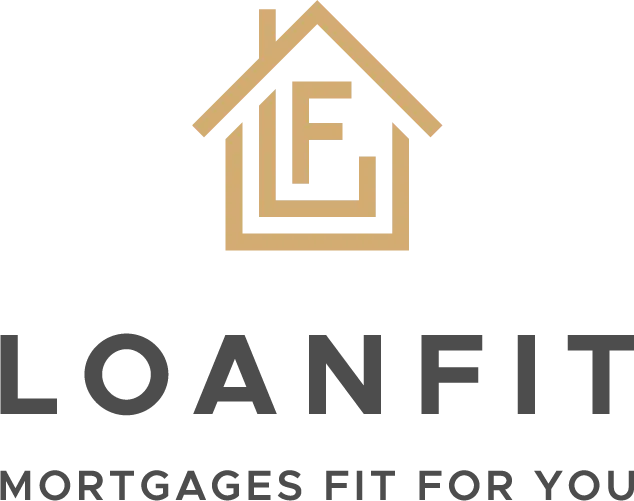News & Resources

How Does a Family Opportunity Mortgage Work?
A Family Opportunity Mortgage (FOM) is a specialized loan designed to help families secure housing for elderly parents or disabled adult children who are unable to qualify for a mortgage on their own. This type of mortgage allows a borrower to purchase or refinance a home for a family member under the same favorable terms typically reserved for primary residences. This means that even though the borrower may not live in the home, the loan is treated as if it were for their own primary residence.
Understanding the Family Opportunity Mortgage and Its Benefits
The FOM is a conventional loan option that allows individuals to buy a home for elderly parents or disabled adult children who can't secure a mortgage due to income limitations or other financial constraints. The loan is structured to offer the same benefits as a primary residence mortgage, including lower interest rates and smaller down payment requirements, making it a more affordable solution for families looking to provide stable housing for their loved ones.
Who Benefits from a Family Opportunity Mortgage?
This mortgage is particularly beneficial for situations where parents or disabled adult children cannot qualify for a mortgage on their own. For example, if a parent is on a fixed income that doesn't meet typical lending criteria or if an adult child has a disability that prevents them from working, a FOM can bridge the gap. The key advantage here is that the home is treated as a primary residence for financing purposes, even though the borrower—typically the child of the elderly parent or the parent of the disabled child—will not live in the property.
This loan option allows families to provide much-needed housing for their loved ones while avoiding the higher costs and stricter requirements associated with second-home or investment property loans. With the FOM, families can take advantage of better interest rates, lower down payments, and more flexible terms, making it an ideal choice for those looking to support their family members in securing a home.
A FOM is a unique financing option that allows individuals to secure housing for elderly parents or disabled adult children who cannot qualify for a mortgage on their own. Here’s how it works:
Eligibility Requirements for a Family Opportunity Mortgage
To qualify for a FOM, borrowers must meet specific guidelines set by Fannie Mae and Freddie Mac:
Credit Score: A minimum credit score of 620 is generally required.
Debt-to-Income Ratio: Borrowers must maintain a maximum debt-to-income ratio of 45%, though exceptions may apply under certain conditions.
Proof of Relationship: The borrower must prove their relationship with the family member for whom the home is being purchased, typically parents or disabled adult children.
Financial Need: Documentation must be provided showing that the family member is unable to secure financing on their own due to insufficient income or a disability.
Step-by-Step Guide to Applying
Applying for a FOM follows a similar process to other conventional loans, with a few additional steps:
Pre-Approval: Begin by getting pre-approved for a mortgage to understand your borrowing capacity and potential interest rates.
Property Selection: Find a suitable property that meets Fannie Mae and Freddie Mac's eligibility criteria.
Documentation: Gather necessary documentation, including proof of the family member’s financial need, your income and employment verification, and any required legal documentation to prove the relationship.
Application Submission: Submit your application with all required documentation to your chosen lender.
Underwriting and Approval: The lender will review your application, verify documentation, and approve the loan if all criteria are met.
Closing: Once approved, you’ll proceed to close the loan, after which the property will be purchased under the FOM terms.
Understanding Family Opportunity Mortgage Terms and Conditions
The terms of a FOM are often more favorable compared to traditional second-home or investment property loans:
Interest Rates: You can often secure lower interest rates similar to those for primary residences.
Loan-to-Value Ratio: This ratio typically mirrors that of a primary residence, allowing for a higher loan amount relative to the property’s value.
Repayment Period: The mortgage will have standard repayment terms, often 15-30 years, depending on the loan structure.
No Occupancy Requirement: Unlike second-home loans, you don’t need to live in the property, though it will be classified as a primary residence for the family member.
This mortgage offers a strategic way to provide housing for loved ones while taking advantage of the benefits typically reserved for owner-occupied properties.
Benefits of the Family Opportunity Mortgage
Lower Down Payments and Interest Rates
The FOM is designed to offer lower down payments and more favorable interest rates than those typically associated with second-home or investment property loans. This can make it an affordable option for families looking to secure housing for elderly parents or disabled adult children. With this mortgage, you can access the same low rates and down payment requirements as you would if you were buying a primary residence, which can significantly reduce the upfront costs and long-term financial burden.
Flexibility in Occupancy and Distance
One of the standout features of the FOM is its flexibility. Unlike traditional second-home loans, this mortgage has no strict occupancy or distance requirements. This means you can purchase a home for your parents or disabled adult children without needing to live in it yourself or worry about how far it is from your primary residence. This flexibility allows families to make the best decisions based on their specific needs, rather than being constrained by rigid mortgage rules.
Tax Benefits
Another key benefit of the FOM is the potential for tax advantages. Homeowners may be able to deduct the interest paid on the mortgage as well as property taxes, just as they would with a primary residence. These deductions can provide significant savings at tax time, further enhancing the financial benefits of using this mortgage option to support loved ones. Always consult with a tax professional to understand how these benefits may apply to your specific situation.
Alternatives to the Family Opportunity Mortgage
Co-Signing on a Mortgage
Co-signing on a mortgage is an option where a family member, often an adult child, agrees to share the responsibility of the mortgage with the primary borrower, such as a parent or disabled adult child. Pros include helping a loved one secure financing they may not otherwise qualify for, while also building credit for both parties. However, cons include the risk to the co-signer’s credit if payments are missed, and the obligation to pay the mortgage if the primary borrower cannot.
Reverse Mortgages
For elderly parents who already own their home, a reverse mortgage can be a practical alternative. This option allows homeowners aged 62 or older to convert part of their home’s equity into cash without having to sell the home. Benefits include no monthly mortgage payments and the ability to remain in the home. Drawbacks include accruing interest that adds to the loan balance over time, reducing the equity available to heirs, and the requirement to repay the loan upon selling the home or the homeowner’s passing.
Renting a Property
Another alternative is purchasing a property and renting it to your parents or adult children. This strategy allows you to maintain ownership of the property while providing housing for your family. Advantages include the potential for rental income and retaining control over the property. Disadvantages include the responsibilities of being a landlord, the potential for rent payments to be inconsistent, and the tax implications of owning a rental property.
The FOM offers a unique and beneficial way for families to secure housing for elderly parents or disabled adult children. By providing lower down payments, favorable interest rates, and flexible terms, this mortgage makes it easier for families to support their loved ones while managing their finances effectively. If you’re considering purchasing a home for a family member who can’t qualify for a mortgage on their own, the FOM could be an ideal solution.
Ready to explore if this mortgage is the right fit for your family? Contact LoanFit today for a personalized consultation and take the first step toward securing a stable home for your loved ones.

